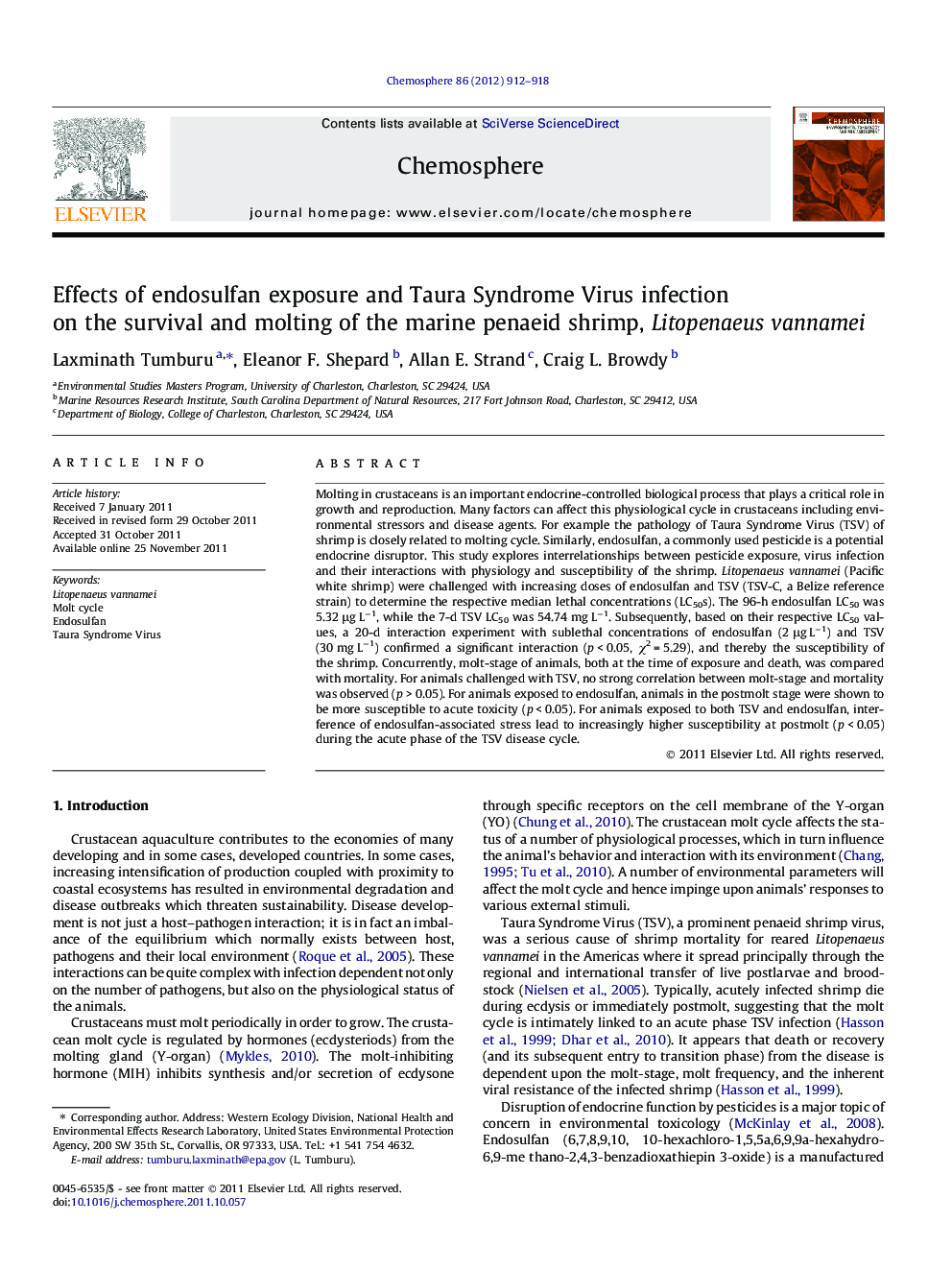| کد مقاله | کد نشریه | سال انتشار | مقاله انگلیسی | نسخه تمام متن |
|---|---|---|---|---|
| 4409868 | 1307514 | 2012 | 7 صفحه PDF | دانلود رایگان |

Molting in crustaceans is an important endocrine-controlled biological process that plays a critical role in growth and reproduction. Many factors can affect this physiological cycle in crustaceans including environmental stressors and disease agents. For example the pathology of Taura Syndrome Virus (TSV) of shrimp is closely related to molting cycle. Similarly, endosulfan, a commonly used pesticide is a potential endocrine disruptor. This study explores interrelationships between pesticide exposure, virus infection and their interactions with physiology and susceptibility of the shrimp. Litopenaeus vannamei (Pacific white shrimp) were challenged with increasing doses of endosulfan and TSV (TSV-C, a Belize reference strain) to determine the respective median lethal concentrations (LC50s). The 96-h endosulfan LC50 was 5.32 μg L−1, while the 7-d TSV LC50 was 54.74 mg L−1. Subsequently, based on their respective LC50 values, a 20-d interaction experiment with sublethal concentrations of endosulfan (2 μg L−1) and TSV (30 mg L−1) confirmed a significant interaction (p < 0.05, χ2 = 5.29), and thereby the susceptibility of the shrimp. Concurrently, molt-stage of animals, both at the time of exposure and death, was compared with mortality. For animals challenged with TSV, no strong correlation between molt-stage and mortality was observed (p > 0.05). For animals exposed to endosulfan, animals in the postmolt stage were shown to be more susceptible to acute toxicity (p < 0.05). For animals exposed to both TSV and endosulfan, interference of endosulfan-associated stress lead to increasingly higher susceptibility at postmolt (p < 0.05) during the acute phase of the TSV disease cycle.
► We study the effects of endosulfan and Taura Syndrome Virus on crustacean molting.
► We examine the pesticide–virus interaction on crustacean molting and mortality.
► Sublethal levels of pesticide and virus interactively affects molting and mortality.
► Crustacean molt stage at the time of exposure and death is compared with mortality.
► Postmolt stage has shown to be more susceptible to pesticide–virus interaction.
Journal: Chemosphere - Volume 86, Issue 9, March 2012, Pages 912–918